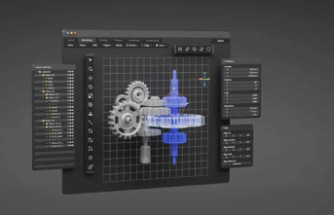We weren’t sure who should write about this beautiful play structure seen in Dezeen in a post titled Matter Design's architectural play equipment encourages kids to crawl, jump and fly. Our editor thought it should be called “Matter Design's play equipment encourages kids to pretend they're in a Dwell article" She also thought it was more a design story. Katherine, who has written often about playgrounds, demurred about writing it, saying “the design part overpowers the play part.”
Historic Survey, Lexington/Public Domain
It sits in the middle of what has been described as a “ radical community of modernist homes…The neighborhood, established in the postwar 1950s by a group of local architects, including the internationally renowned Walter Gropius, was devised as a mix of social idealism and unconventional design“ - Five Fields, in Lexington, Mass.
© Brandon Clifford via Dezeen
This structure appears to be following that same pattern. The designer is quoted in Dezeen:
"TAC [The Architects’ Collaborative, Gropius’s firm] conceived the neighbourhood as an experiment and the community, wishing to keep the experimental spirit alive, requested a structure that is both safe and exhilarating for the kids," said Clifford and Schanbacher. "They wanted something that would challenge the kids without any singularly functional elements."
© Brandon Clifford via Dezeen
It all begs the question: what is a playground? The designers appear to have studied, listened, and have designed it to accommodate different ages:
“These decisions produce escalating challenges for the kids; mitigating risk and ensuring the correct age-range have access to the more treacherous areas instead of withholding them entirely," the architects said. "Older kids climb over while younger crawl under.
It has a zip line and a lookout, but otherwise, it doesn’t look like there is much to do, seeming more like a giant play house than play ground. In Katherine’s Short history of playgrounds, she described how playgrounds have evolved:
One major influence on playground design is visibility and transparency. The older designs are amazingly complex and intricate, and have many small hidden spaces. Parents and law enforcement prefer to be able to see the majority of the play space easily.
© Brandon Clifford via Dezeen
Clifford and Schanbacher’s design definitely is complex and has many hidden spaces. But it is so seriously minimal. Katherine also writes that “kids need a space to call their own, and it's even better when it comes with heaps of treasures disguised as junk and tools with which to build anything they please.”
I circle back to Katherine’s statement when she declined to write about it: “the design part overpowers the play part.” Perhaps they have done what architects do when they arrange photo shoots of modern homes- they get their clients to take everything out, making it empty and minimalist. I hope so.
Lots more images on Dezeen
Our editors found this article on this site using Google and regenerated it for our readers.













